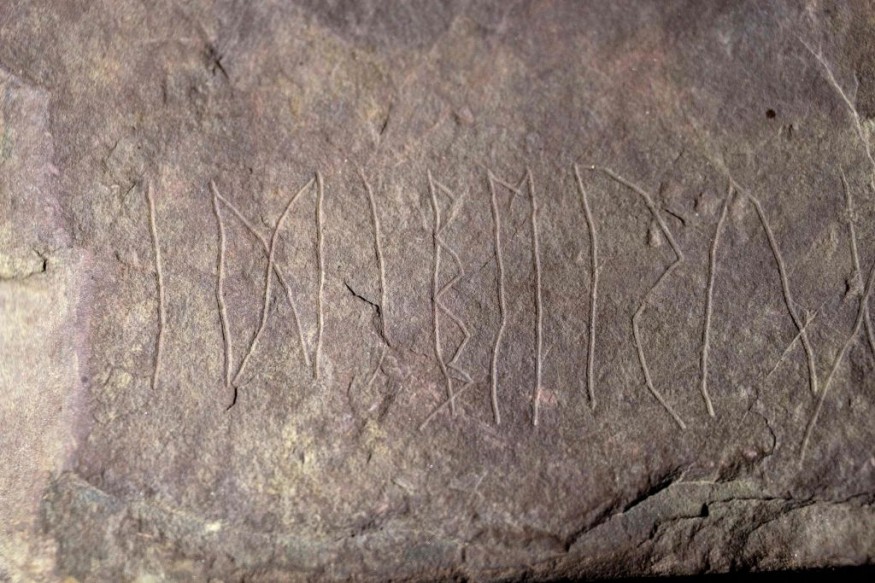The "world's oldest runestone" is a squat slab of sandstone with ancient writings across its flat surface that has been discovered in Archaeologists said that it could be the earliest example of "words written in Scandinavia."
It was discovered in late 2021 while the team was digging a graveyard in Tyrifjorden, a village west of Oslo. Through radiocarbon dating of artifacts they found on the site, the press release reports that archaeologists were able to date the runestone that was most likely from 1 and 250 A.D.

Idiberug: Writings on the World's Oldest Runestone
The runestone measures 12.2 by 12.6 inches (31 by 32 cm) and has been named "Svingerudsteinen," or "the Svingerud Stone," in honor of the site where it was unearthed. It contains inscribed characters from the Germanic alphabet, wherein eight runes on the front face of the stone have a word that spells "idiberug" when converted to Roman letters.
As per The Associated Press, scientists are currently decoding many of the etchings because some of the writings do not make linguistic sense.
Runologist Kristel Zilmer, Professor of Written Culture and Iconography at the museum, the "idiberug" word could be a woman's name called "Idibera" or it could refer to a kin name "Idiberug" or the writings could also be saying "for Idibera."
Professor Zilmer told The Associated Press that they can get vital knowledge from the runestone about the early history of runic writing. She added that the discovery will provide a wealth of information on how it was used in the early Iron Age.
It could be one of the earliest attempts in Norway and Scandinavia to use runes on stone. The Svingerud Stone will be on exhibit at the Museum of Cultural History in Oslo for a month beginning January 21.
READ ALSO: Australia's Oldest Rock Painting of Kangaroo Found To Be 17,000-Year-Old Thru Radiocarbon Dating
Record of an Ancient Language
CNN reports that the team identified the writings on the Svingerud Stone as the oldest known form of writing in Scandinavia, and the alphabet was widely used from the beginning of the Common Era (CE) and throughout the Viking Age until the late Middle Ages.
There are several thousand runestones from the Viking Age (between 793 and 1066 AD) in Scandinavia, although there is little evidence of runes from older times. More so, only roughly 30 of the runestones discovered in Norway are thought to be older than 550 AD.
Meanwhile, Svingerudsteinen is the only stone discovered by archeologists that predate 300 AD. It even has the first three letters of the runic alphabet on one of its sides, namely "f," "u," and "th".
Archaeologist Steinar Solheim, an excavation manager at the Museum of Cultural history told CNN that the runestones with runes from the older runic alphabet known as futhark are very rarely found in dateable archaeological sites, which makes the discovery unusual.
That means the runestone tradition could be older by a few hundred years than previously believed. Also, it makes experts wonder what else could be unknown regarding the use of runic writing in the early Iron Age in Scandinavia.
RELATED ARTICLE: 20,000-Year-Old Cave Paintings May Represent the First Use of a Calendar System to Pass on Survival Information
Check out more news and information on Archaeology in Science Times.












